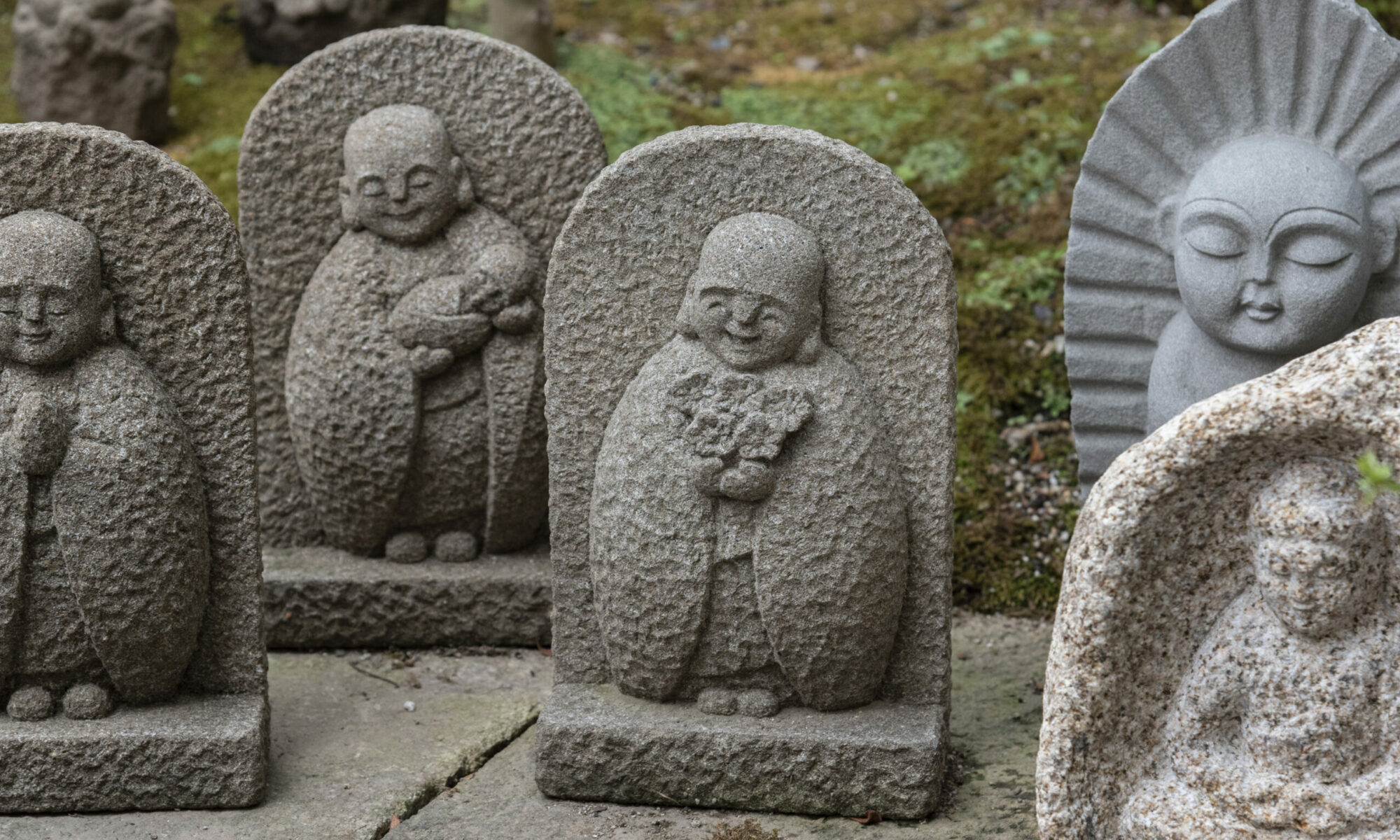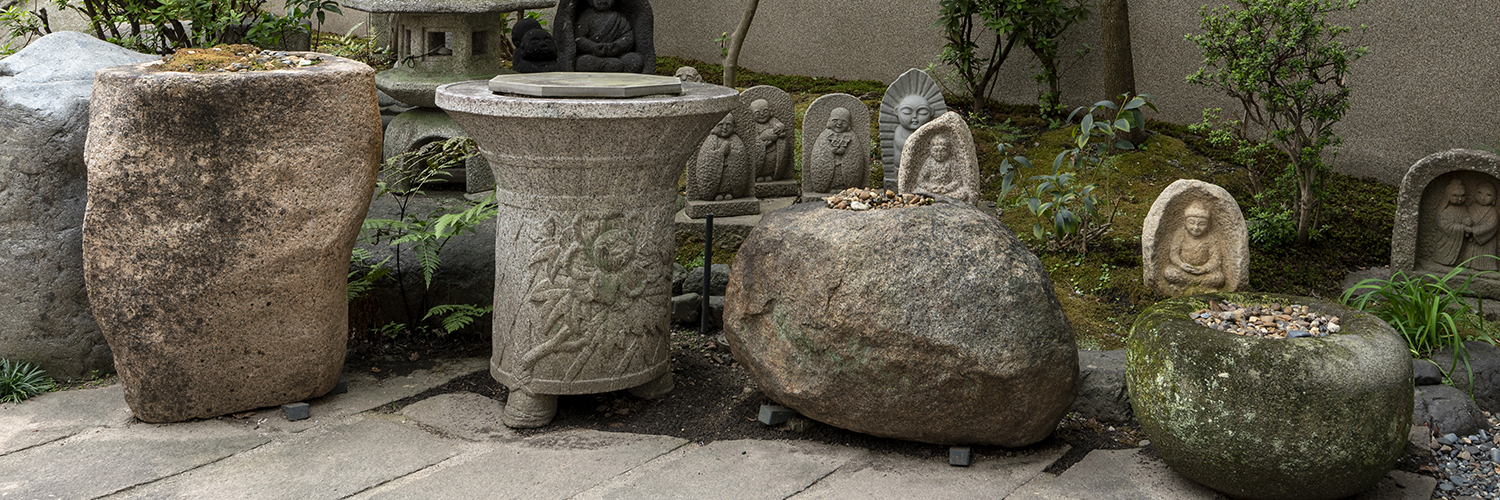Japanese tea ceremony culture is rich in traditions that emphasize formality and etiquette. Among its essential elements is the ‘tsukubai.’ In today’s blog, we will explore the wonder and variety of tsukubai, which will deepen your appreciation for Japanese culture through its many forms.
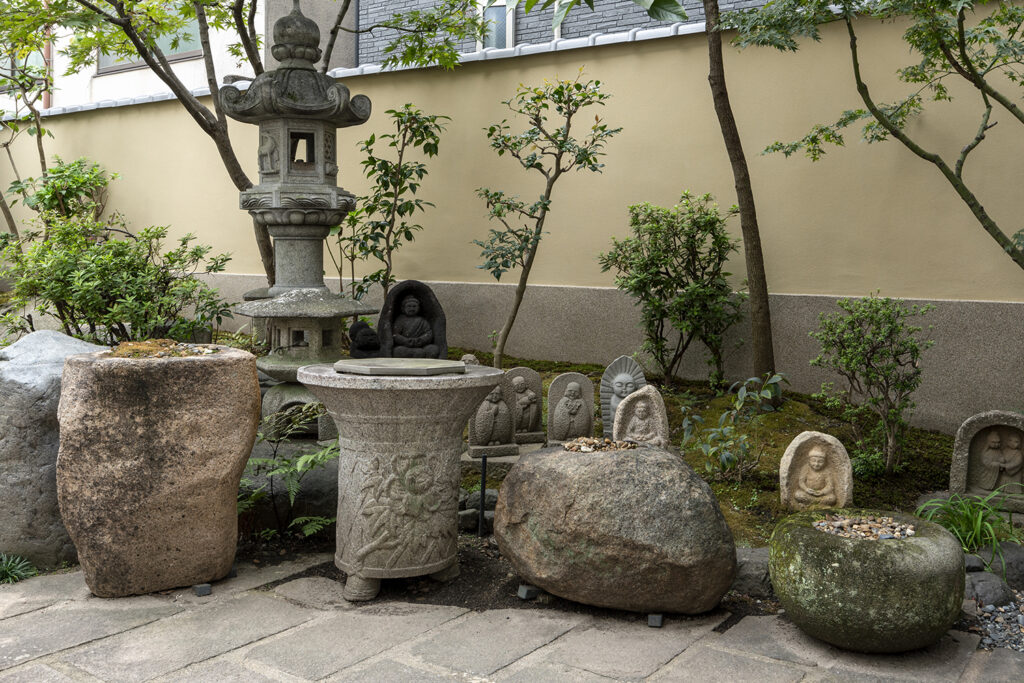
What is Tsukubai?
Tsukubai refers to a hand-washing basin (chōzubachi) placed in the roji (tea garden) in front of the tea room, playing a vital role in the tea ceremony. Before entering the tea room, participants are required to purify themselves, which involves washing their hands and mouth at the tsukubai. It also symbolizes a boundary separating the mundane world from the special space of the tea room.
The name tsukubai comes from the act of “tsukubau” (to crouch down) when washing one’s hands. This tradition began with guests at tea ceremonies bending down to cleanse themselves.
Today, as fewer households have tea rooms, tsukubai is often used as a decorative element in gardens. Its presence enhances the aesthetic of Japanese gardens, creating a serene and harmonious atmosphere.
Types of Tsukubai
Tsukubai comes in various forms, ranging from traditional designs to creative interpretations. Here, we’ll introduce a few types of tsukubai available at ISHIMO.
■ Chisoku no Tsukubai
This cylindrical stone features carvings around its rim that read “Go, Ya, Hiki, Tsubame,” which represent the Zen phrase “Ware tada taru o shiru” (吾唯足知). This phrase conveys the idea of being content with what one has, reminding us to recognize the sufficiency of our present circumstances.
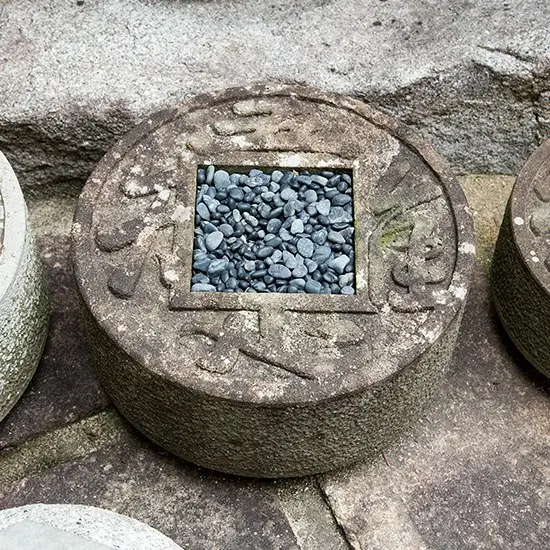
This stone basin is also called Zeni-gata. This type of basin resembles a zeni, or old coin, with a hollow square center surrounded by carved letters. Its shape is inspired by ancient Japanese currency and symbolizes wealth and prosperity.
■ Teppatsu-gata no Tsukubai
The Teppatsu-gata tukubai is simple and round in shape. Originally made from sturdy cast iron and used for practical purposes in Japanese gardens and temples, their durable material symbolizes strength and resilience.
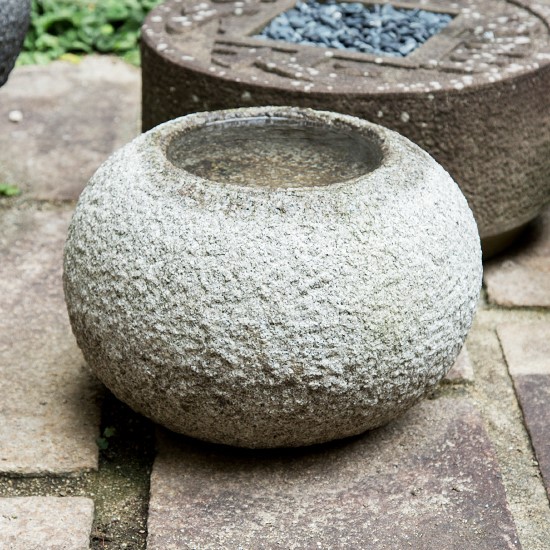
■ Natsume-gata no Tsukubai
The Natsume-gata tsukubai is named for its resemblance to the fruit of the jujube tree (natsume). This shape gained popularity during the Taisho era (1912 to 1926) and remains a beloved design today.
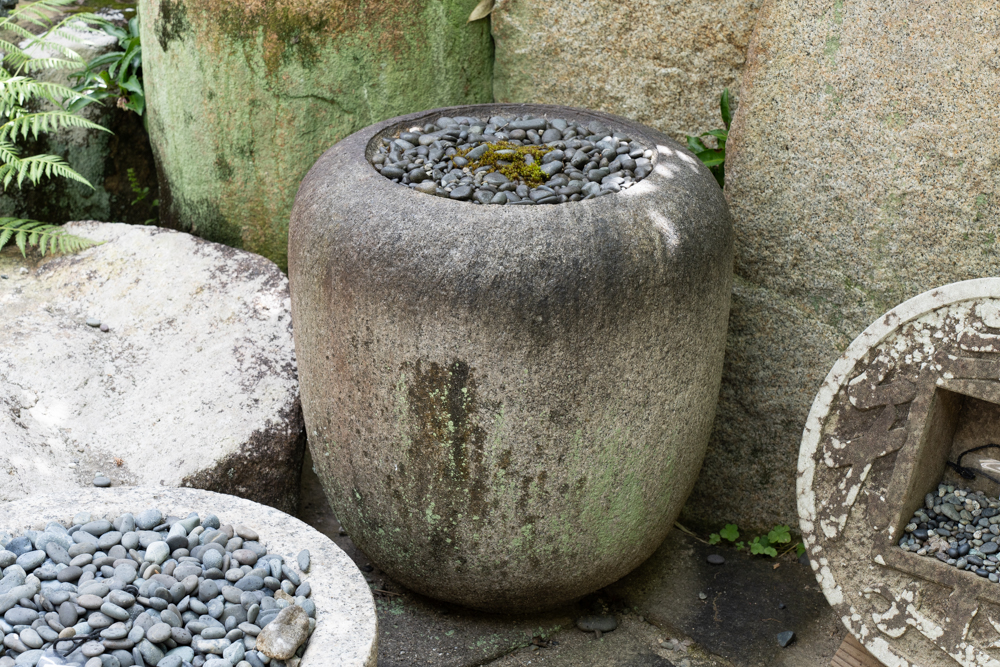
■ Shizen-ishi-gata no Tsukubai
The Shizen-ishi-gata tsukubai showcases the natural shape of the stone, highlighting its inherent beauty and harmonizing beautifully with the garden setting.
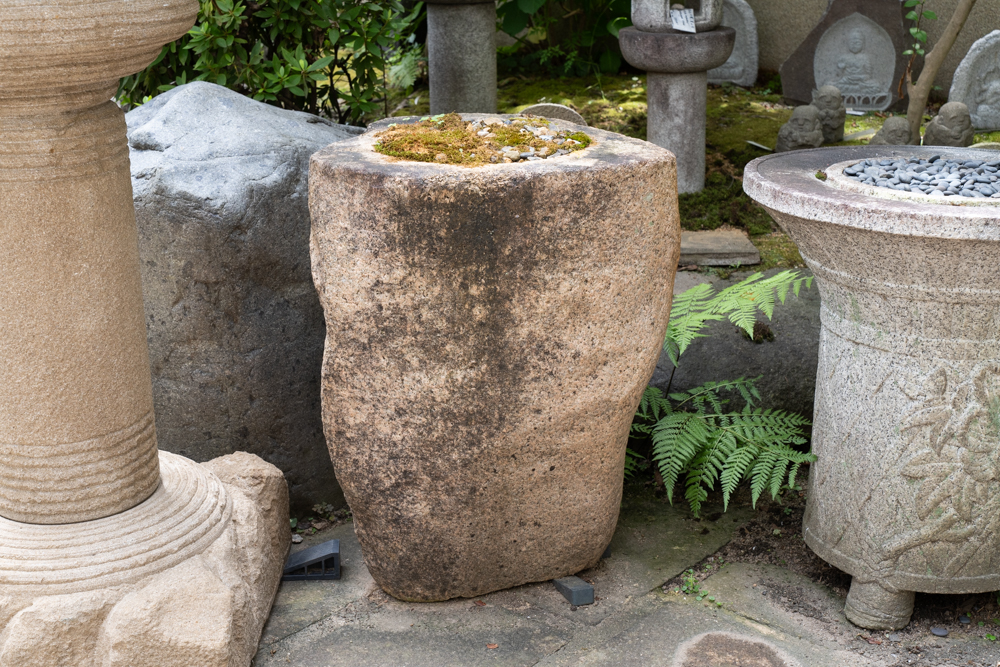
■ Ginkakuji-gata
Named after the renowned Silver Pavilion in Kyoto, the Ginkakuji basin has a square shape, symbolizing stability and grounding. Its sharp angles contrast with the natural, flowing forms commonly found in gardens, adding a sense of architectural structure to the space.
■ Kesa-gata
The Kesa-gata basin features a distinctive, flowing design that resembles the shape of a traditional Buddhist robe, or kesa. Often found in temple gardens and other sacred spaces, it symbolizes purity and spiritual refinement.
Tsukubai not only holds traditional significance in Japanese tea ceremony culture but also plays a role in enhancing the beauty and charm of modern gardens. By incorporating tsukubai into your garden, you can create a tranquil space that evokes a sense of serenity.
At ISHIMO, we offer a variety of tsukubai designs. We invite you to visit our online shop and explore our selection!
